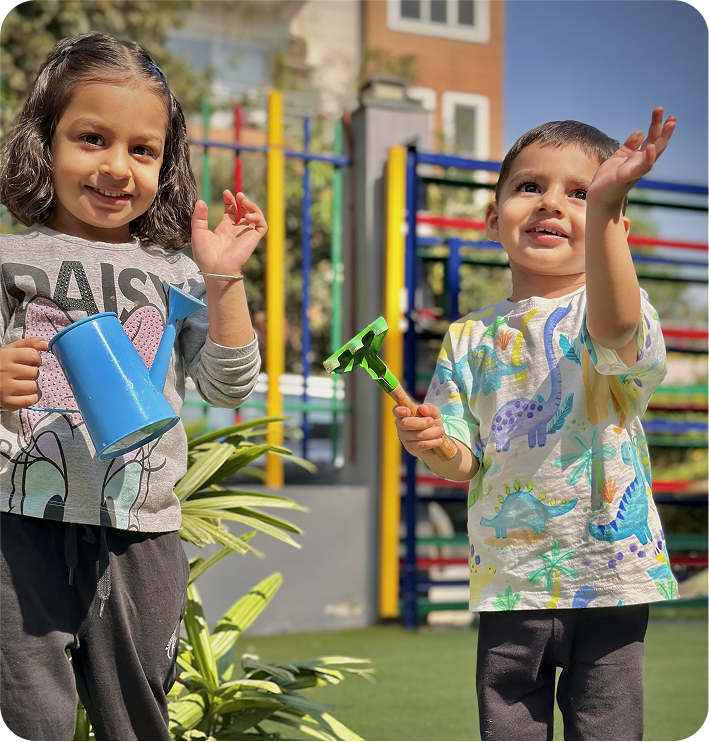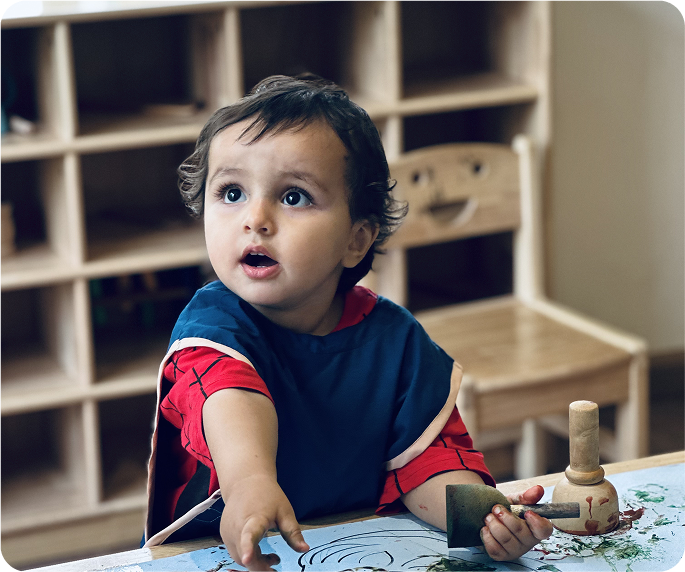
Every parent wants to choose a preschool that feels right for their child.
Some prefer structure, while others believe in freedom and discovery.
In India, the choice often comes down to two broad approaches: Montessori and Traditional.
Both have their advantages. Both can shape children in meaningful ways.
However, the difference lies in how they define learning and what they believe a child truly needs in the early years.
This guide explains how these two systems differ, what type of learner each one supports best, and how parents can make an informed decision.
What is a Traditional Preschool Approach?
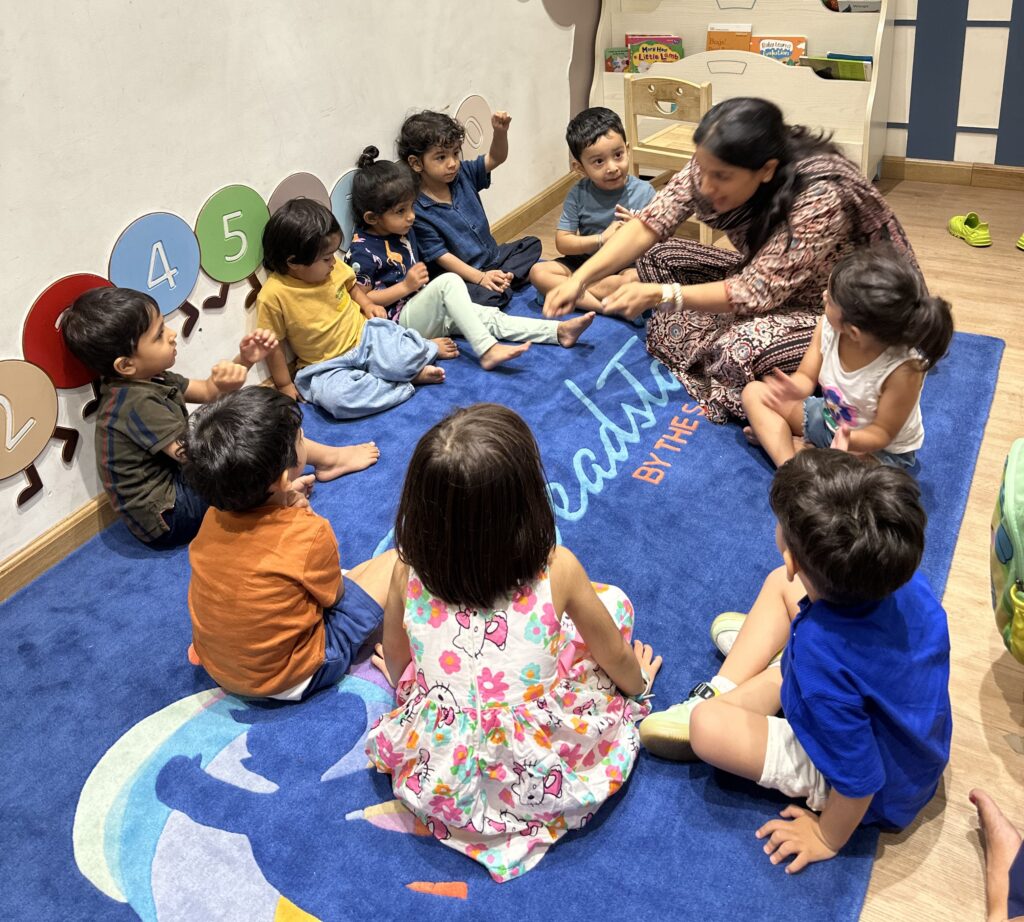
Traditional preschools follow a teacher-led model. In this setup, learning is structured around lessons, group activities, and guided instructions. Children are introduced to alphabets, numbers, colors, and shapes in a more defined sequence.
The classroom often runs on a fixed timetable. The teacher directs the group, and children are expected to follow instructions together.
This method has been used for decades and can provide comfort to parents who value familiarity and measurable progress.
Traditional settings usually emphasise school readiness. The goal is to ensure that children develop the habits required for formal education: sitting for longer periods, listening attentively, and completing small tasks independently.
However, creativity and self-paced exploration can be limited if structure outweighs freedom.
What is a Montessori Preschool?
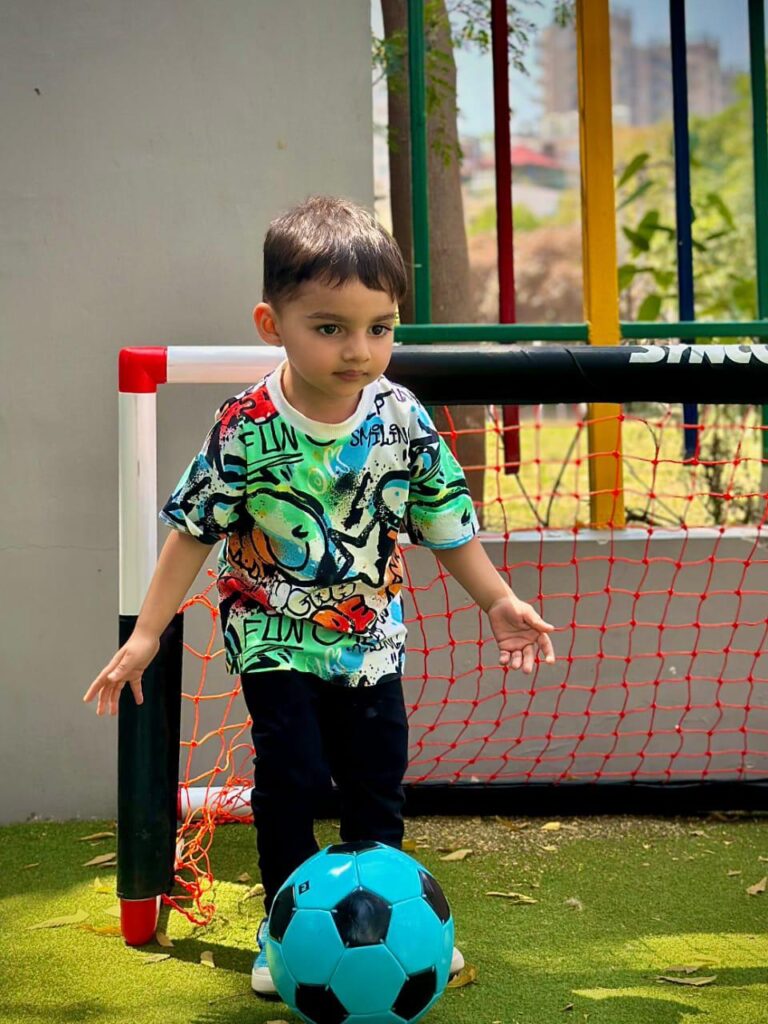
The Montessori approach, developed by Dr Maria Montessori in the early 1900s, focuses on child-led learning. Here, children move at their own pace, choose their own activities, and learn through real, hands-on materials instead of worksheets.
The environment is designed to invite curiosity. Every material has a purpose, encouraging independence and sensory discovery. Teachers are called guides because their role is to observe and assist rather than instruct.
A Montessori classroom usually includes children of mixed ages, allowing younger ones to learn from older peersThis setup creates collaboration rather than competition.
The approach believes that children are naturally capable of learning when provided with an environment that respects their individuality.
Key Differences Between Montessori and Traditional Preschools
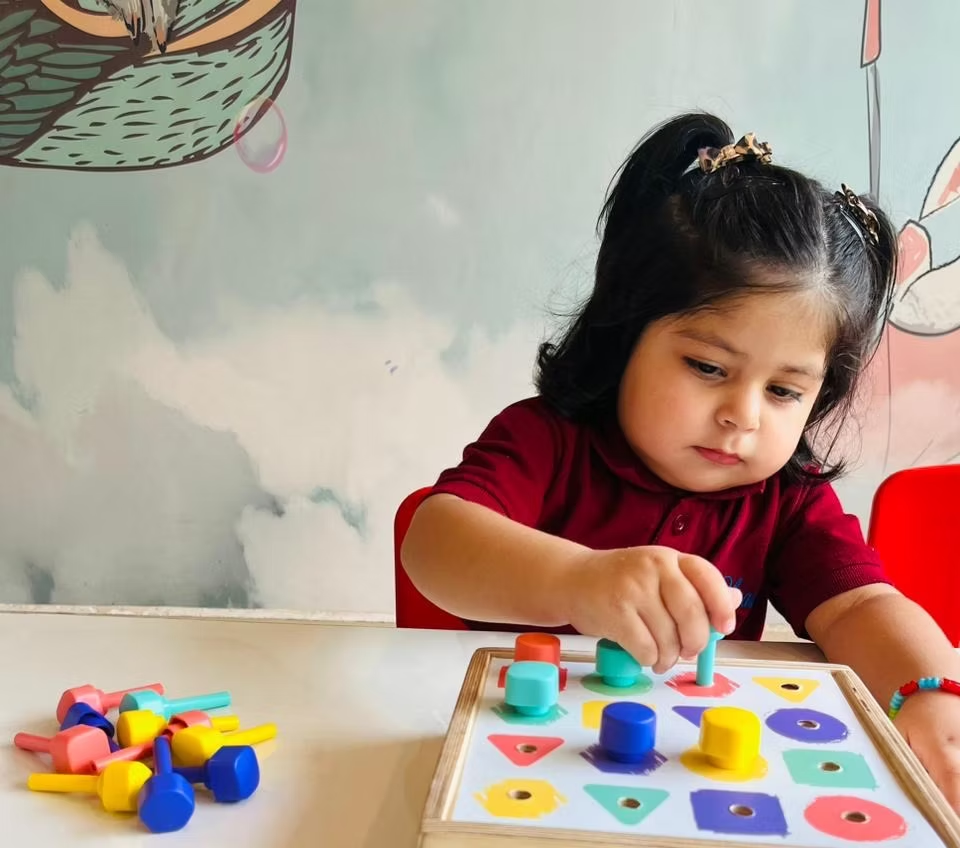
| Aspect | Montessori Preschool | Traditional Preschool |
| Learning Style | Child-led and exploratory | Teacher-led and guided |
| Pace of Learning | Self-paced, based on individual readiness | Group-paced, same activity for all |
| Classroom Structure | Mixed-age groups, freedom to move and choose | Same-age groups, fixed timetable |
| Role of the Teacher | Observer and guide | Instructor and leader |
| Materials Used | Sensory tools, natural objects, practical life activities | Worksheets, toys, and structured lessons |
| Assessment | Continuous observation | Periodic evaluation and comparison |
| Goal of Education | Independence, curiosity, and intrinsic motivation | Academic preparation and discipline |
Both systems aim to prepare children for life beyond preschool. The distinction lies in how they view the process of learning itself.
Which Type of Child Benefits from Each?
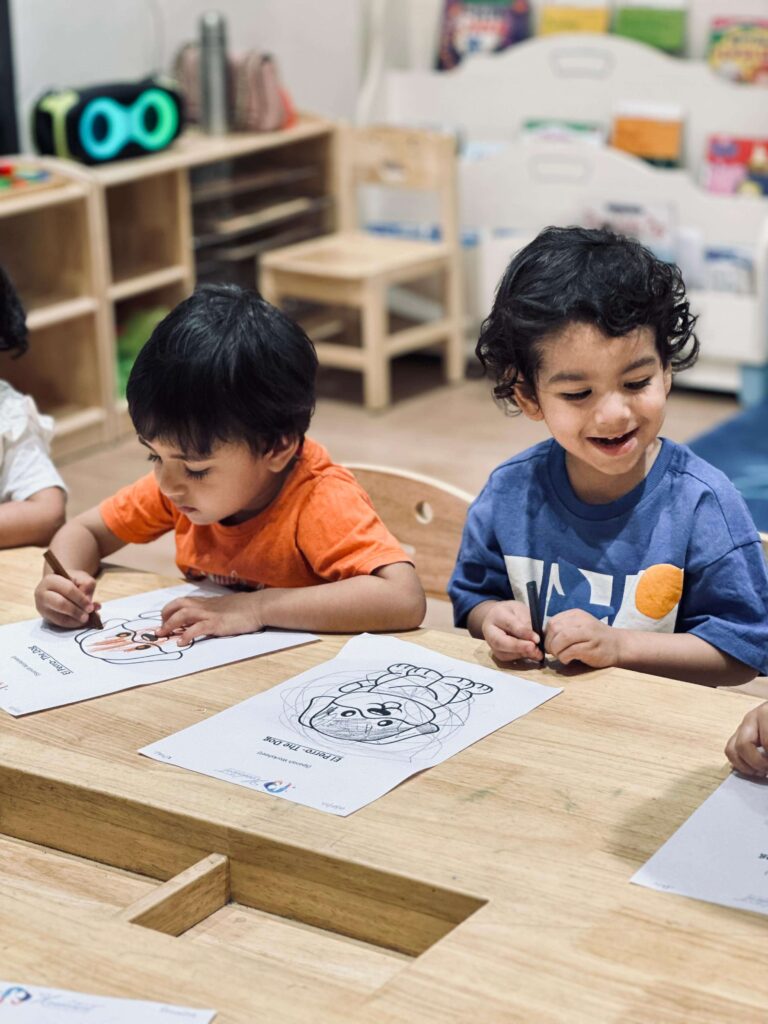
Some children flourish in predictability. They find comfort in structure, repetition, and guided learning. For such children, a traditional preschool can provide stability and clarity.
Others prefer exploration. They like to choose, question, and experiment. These children often thrive in Montessori environments where curiosity leads the way.
However, most children possess a blend of both traits. This is why a balanced approach often works best.At Headstart Preschool, Montessori principles are combined with elements from Finnish and Waldorf philosophies. The aim is to create a setting where structure supports creativity rather than restricts it.
The Montessori Philosophy in Practice
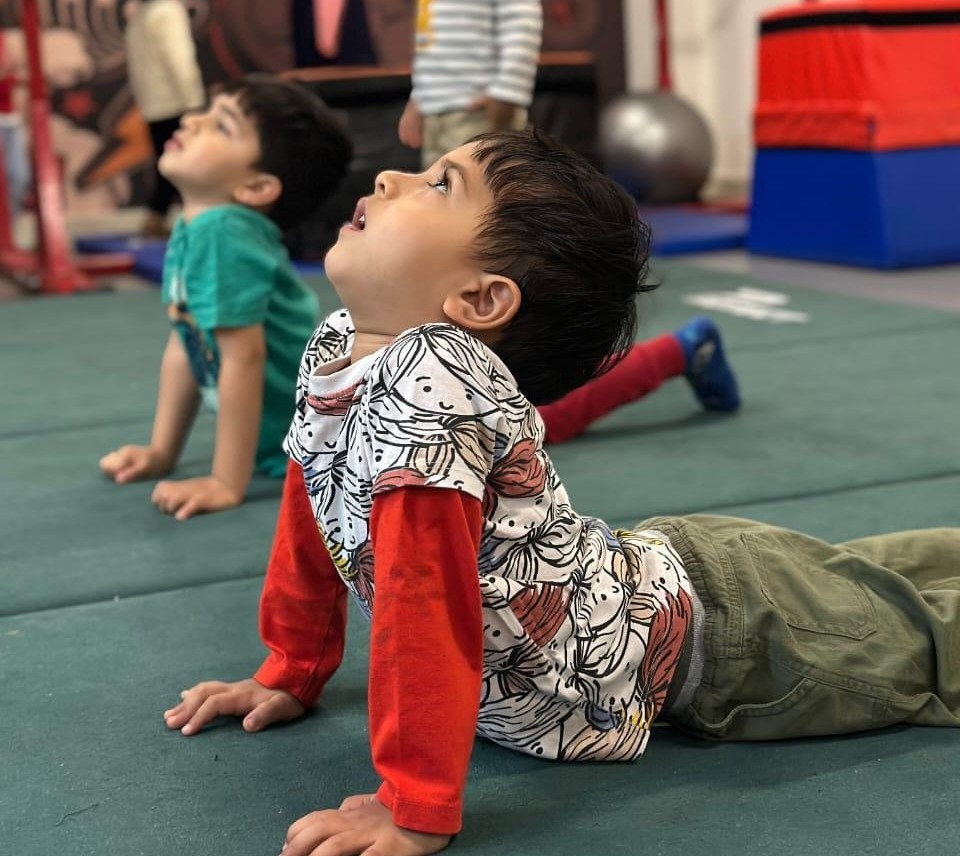
In a Montessori classroom, every activity is purposeful.
Pouring water, arranging beads, or tying a bow may look simple, but each task develops concentration, coordination, and independence.
Children are encouraged to work quietly and focus on what interests them most. The absence of competition allows them to grow without fear of comparison.
Teachers observe rather than interrupt. When a child completes a task successfully, the joy comes from within, not from external praise. This builds lifelong confidence and self-discipline.
The Traditional Approach in Practice

Traditional preschools are generally more structured. There is a group rhythm that everyone follows, which helps children get used to the classroom expectations they will encounter later in school.
Activities often revolve around storytelling, singing, crafts, and early writing or counting. Lessons are planned around monthly themes, and progress is assessed through simple tasks and teacher observation.
This environment is well-suited for children who prefer routine, clear instructions, and group-based learning.
What Parents Often Overlook
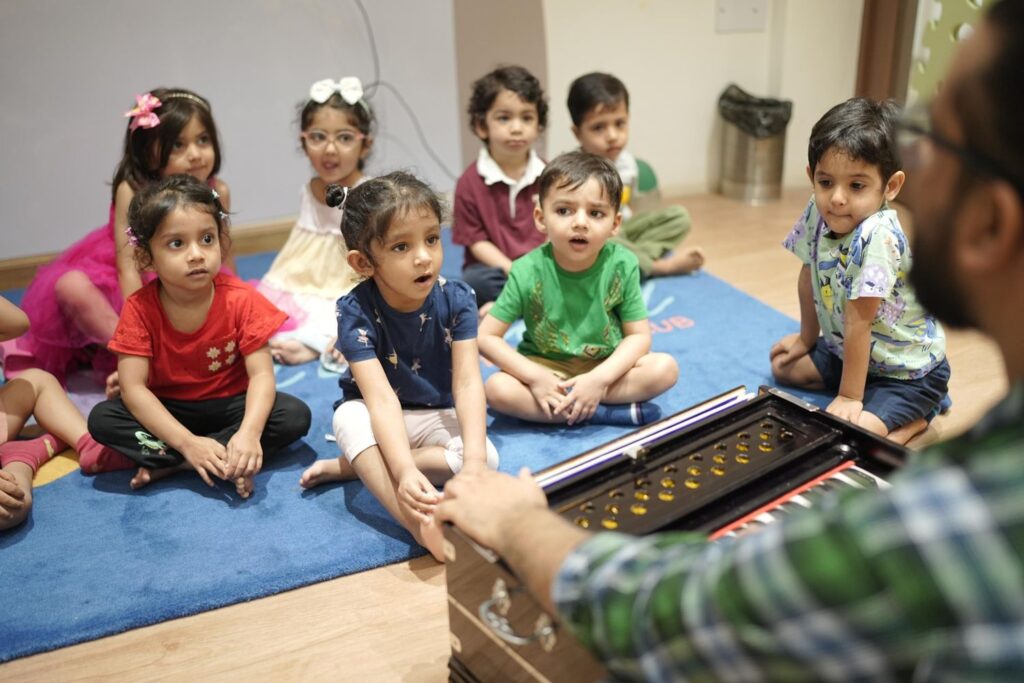
Many parents believe that Montessori schools are unstructured or that traditional schools are rigid.
Neither assumption is completely true.
Montessori classrooms have structure, but it is built around the child’s freedom of choice.
Traditional classrooms offer creativity too, but within the teacher’s guidance.
The most effective environment depends on how well the school executes its philosophy. A poorly managed Montessori school can be as limiting as an overly strict traditional one. Quality depends on trained teachers, thoughtful routines, and a genuine respect for children’s individuality.
How to Choose Between Montessori and Traditional Preschool
Here are some practical points to reflect on before making your decision:
- Observe your child. Notice if they prefer leading or following, exploring or listening.
- Visit both types of schools. Watch how teachers interact with children and how freely children move and speak.
- Ask about balance. The best preschool in Gurgaon often uses a blended model where Montessori-inspired learning merges with gentle structure.
- Consider emotional readiness. A Montessori classroom demands a bit more self-direction, while a traditional one provides more direct support.
- Trust your instinct. The right preschool should feel calm, warm, and joyful.
The Headstart Way

At Headstart, the classroom is viewed as a living ecosystem. Montessori freedom, Waldorf creativity, and Finnish emotional awareness are combined to create balanced learning.
Children are guided but never rushed.
They learn language, art, movement, and empathy as naturally as they learn to speak. The result is a confident learner who approaches the world with curiosity and respect.
Parents searching for the best preschool in Gurgaon often find that what makes a school special is not a label, but a feeling. It is the way teachers speak to children, the way curiosity is welcomed, and the way every small discovery is celebrated.
Conclusion
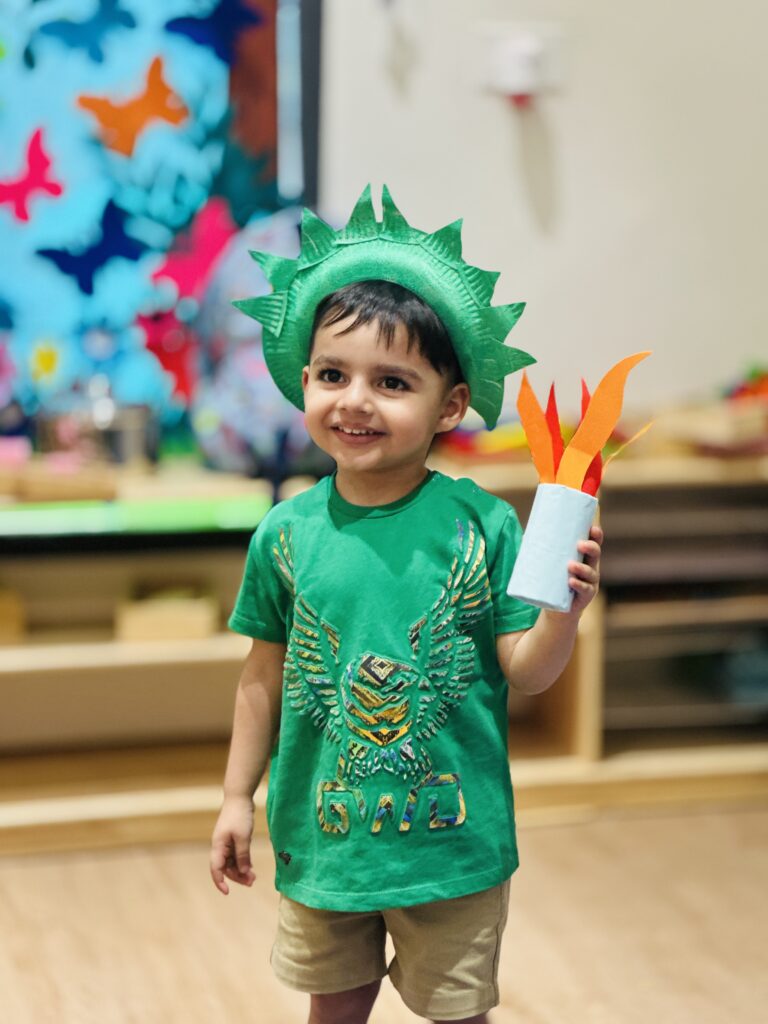
Montessori and traditional preschools are not opposites; they are two paths toward the same goal. One emphasises freedom within structure, the other structure within freedom.
What truly matters is how a school balances both.
Every child deserves an environment that sees them as capable, curious, and unique.
At Headstart, that belief shapes every corner of the classroom.
The right preschool is not the one that teaches the most.
It is the one that helps your child love learning the longest.

